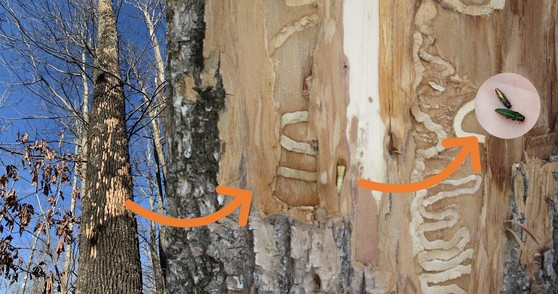National Invasive Species Awareness Week: Forest Pests
 Looking for Emerald Ash Borer? Watch for woodpecker activity.
Bright specks on stems of ash provide a tip that woodpeckers have been searching for food. In some cases, those specks also reveal activity by the invasive emerald ash borer. Dark chips of bark littering the snow are another sign that woodpeckers have been foraging for food just beneath the bark of trees. These signs are visible at highway speed, on a snowshoe trek, swooshing down slopes, snowmobiling and even sitting down for a meal at your local Chinese restaurant (It happened!).
Let us know if you see evidence of woodpeckers dining on emerald ash borer.
#NISAW #WatchYourAsh #InvasiveSpecies
A pile of ash tree bark on snow can be a tip-off to the presence of emerald ash borer. Light patches of bark and the bark pile result from woodpeckers foraging for emerald ash borer. Image Credit: Patrican, CC BY-SA, via Wikimedia Commons.
|
